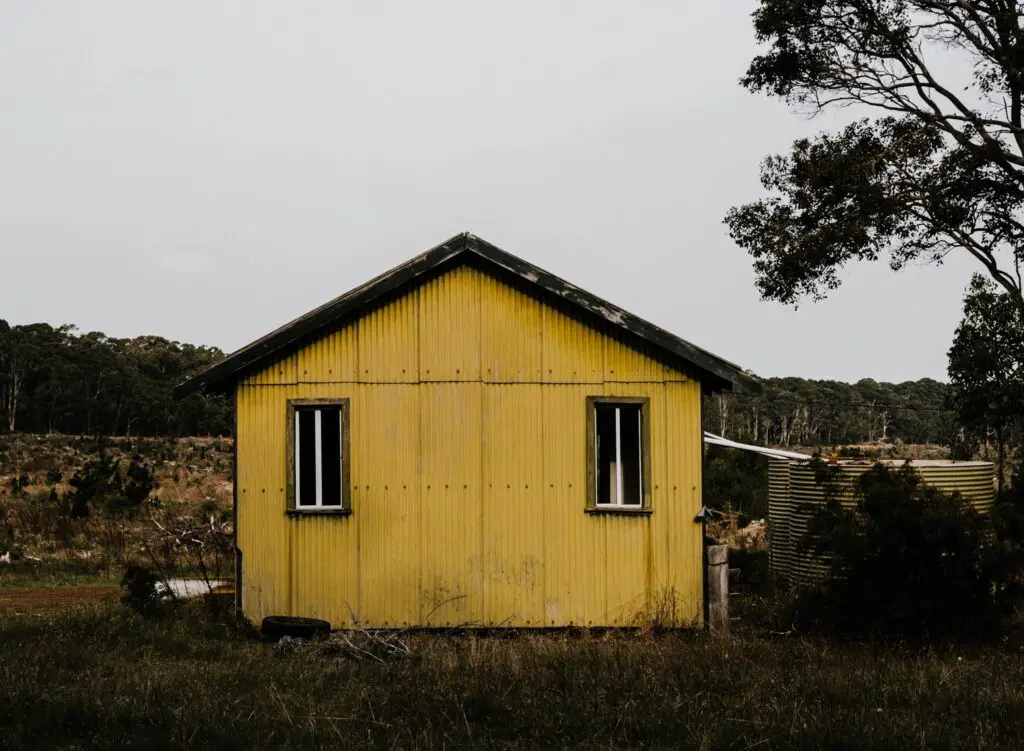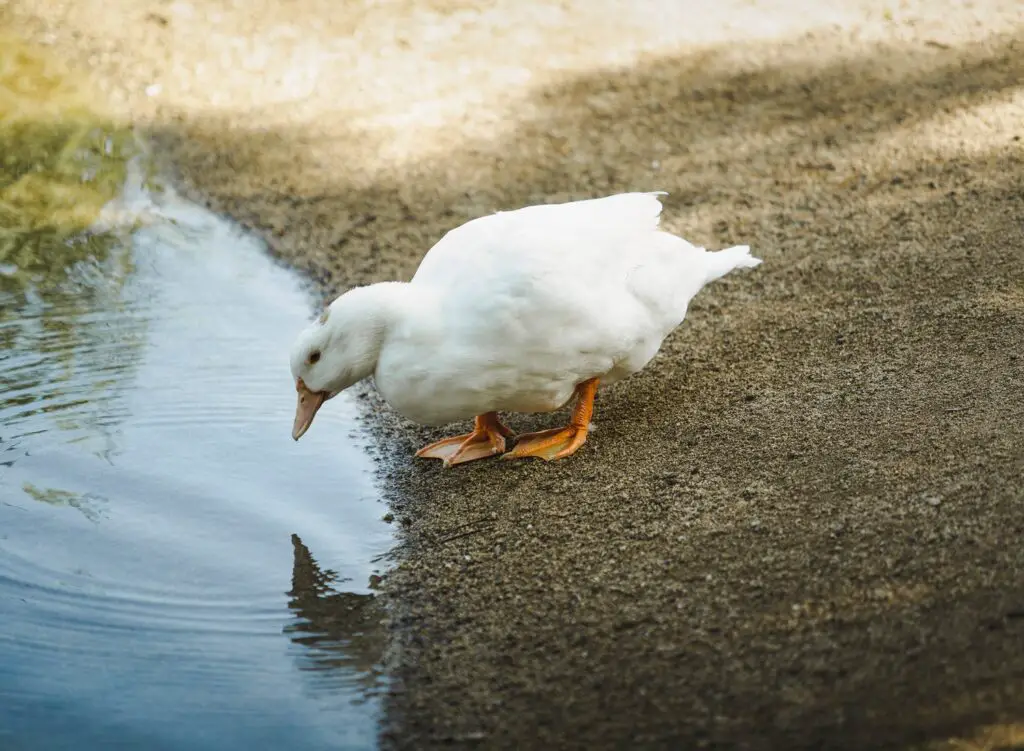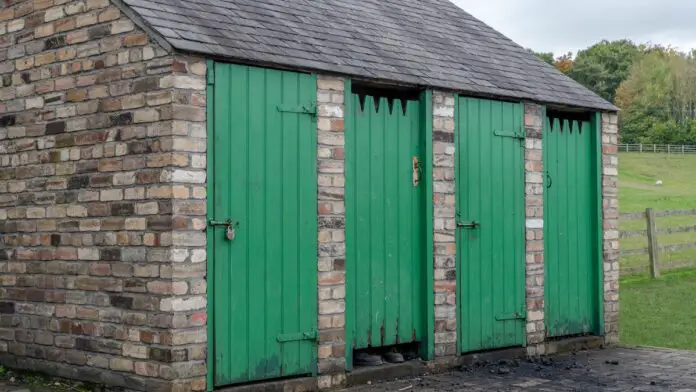Some links on this page may contain affiliate links which means that, if you choose to make a purchase using the link, Agricfy.com may earn a small commission at no extra cost to you. For more information, go to our Affiliate Disclosure Page!
Introduction
It is not just enough to start a poultry farm in this day and age. Making good money from it goes beyond buying chickens, turkeys, guinea fowls, etc, raising them, and selling them at the end of a specific period.
There are some measures that need to be put in place to avoid failure while raising your poultry birds. One of which is a solid poultry farm biosecurity.
A set of essential activities and techniques is used in poultry farms to ensure biosecurity. These procedures prevent diseases from entering and spreading within the farms, reducing the detrimental impact on chicken production.
What is Biosecurity?

In general, biosecurity is described as a combination of hygienic and preventative measures that, when implemented on a long-term basis, prevent and avoid the entry and exit of infectious pathogens. These precautions should be implemented across the board in all animal production systems. In the next essay, we will especially cover biosecurity on farms dedicated to poultry production in all of its forms, including laying hens, broilers, and reproductive birds. Each producer organization or animal health institution in each nation produces a handbook. The Manual of Good Biosafety Practices is a common name for these documents. Furthermore, some stress the procedures that should be taken for each sort of poultry farming.
There are many infectious illnesses whose preventive and control strategies are inextricably linked to the farm’s biosecurity. Avian cholera, Newcastle disease, Marek’s disease, Salmonellosis, Coccidiosis, Mycoplasmosis, Colibacillus, and Avian Influenza are just a few of the illnesses that can affect birds.
Steps of Bio-Security
There are three steps of bio-security:
- Conceptual Bio-security
- Structural Bio-security
- Operational Bio-security
Conceptual Bio-security
- Farm location in relation to poultry concentrations of the same or distinct species
- Farms, hatcheries, and processing/packing plants are separated by a significant distance
- Road-based connectivity
- Water supply proximity
Structural Bio-security
- Farm fencing to keep trespassers out
- Secure housing with appropriate bird and rodent proofing, concrete flooring, optimal exhaust fan location to prevent airborne infections, and adequate ventilation and drainage
- Pathogen-free and chlorinated water supply for the farm ( 2ppm)
- Farm, which includes an office, storage, and bathing facilities
- Installing bins for pest-free bagged feed storage. Feed, litter, and equipment are stored in a separate storage container from the live flock.
- A facility for the disposal of deceased birds
Operational Bio-security
- The creation of operating manuals for regular agricultural tasks
- Unit decontamination and disinfection once flocks have been depleted
- Implementation of specified processes for the admission and leave of farm managers, supervisors, authorized guests, and personnel
- Strict regulations to prevent exotic and backyard fowl from coming into contact
- Adequate vaccination
Poultry Farm Biosecurity: Daily Procedures
The following are routine biosecurity procedures to keep the poultry farm running well;
Isolation
- The danger of infection is reduced by isolating the poultry farm from other birds.
- If a 5km barrier is present, cross-infection across farms is decreased by at least 50%.
- (Isolation is more difficult in practice due to the costs of transportation, feed, eggs, birds, and supply labor.)
Fencing for Security

- Farm fencing is critical for security and theft prevention by preventing natural predators such as ox and wolves from entering the property.
- A foot wash at the point of entry into each chicken farm will greatly aid in disinfection.
- Staff, guests, and cars have no other way of entering or leaving the property but through the shower system.
The Farm and The Shed

The Farm and the Shed
- Before introducing a new flock, there should be a batch interval (15 days to 1 month)
- Concrete floors are easy to clean and maintain
- Clean thoroughly and disinfect with a disinfectant and detergent that is appropriate for the job
- Proper drapes to protect the flock from harsh weather and rainwater ingress, as well as proper ventilation
- Microbiology laboratory knowledge of illness prevention and checking bacterial burden
- Plant trees, not fruit trees, and don’t let grasses or weeds grow around the sheds; instead, place gravel between them
- The distance between two separate sheds of the same kind is 30 feet, between two different sheds of different types is 100 feet, and between a chicken house and an incubator is 500 feet
- Build an appropriate drainage system
Traffic in Human Beings
- Control of human traffic, which includes regular personnel and visiting servicemen, such as weekend veterinarians who may visit many sites in a row
- Allow visitors only in exceptional circumstances, such as when a veterinarian is present
- If at all possible, the visitor should cover all of their belongings, including the farm’s boots, which should be cleaned after each usage
- It is necessary to keep track of all visitors to the site, including their names, dates of visit, and the nature of their business
- Other than the shower system, staff and tourists have no other access to the farm.
- Keep the number of visits to a bare minimum
- One of the most important dangers to biosecurity is the transfer of disease-causing organisms by humans
- Place signage at the farm’s entrance stating that access to the property and its facilities is limited
Lock Buildings

- Do not be scared to inquire about any guests’ whereabouts. They shouldn’t have spent more than 48 hours on a poultry farm before coming to yours.
- Visitors should be limited, and any visitors to the farm should have a valid purpose for being there. Visitors should never enter chicken houses unless the farm staff has permission.
- Visitors who work with poultry or have had recent contact with poultry should wear protective clothing such as boots, coveralls, and helmets.
- The traffic flow in a chicken house should always go from the youngest to the oldest birds.
- Keeping track of who has visited the farm is a good idea. Knowing who was present can assist reduce subsequent flock infections if a problem occurs.
Water And Food Are Two Essentials in Animal

- Because water may spread illness and function as a vector for bacteria, fungus, and protozoa. It should be tested chemically and biologically at least twice a year for contamination.
- Microorganisms use feed as a vector.
- It’s best to avoid storing surplus feed.
- Store above ground, away from walls, in a feed room.
- Feed lumps must be thrown away.
- Feed tanks should be washed once a month, disinfected twice a month, and fumigated after each bird crop to prevent bacterial count and mold formation. In addition, it’s possible to utilize mold inhibitors.
- Toxins such as aflatoxins and other similar substances should be checked in the diet.
- Heat treatment is advantageous since it does not degrade the product’s nutritional value.
Poultry Farm Equipment
- Only sterilized equipment is allowed to be moved from farm to farm.
- Sanitization of egg flats from the farm to the hatchery is required.
- Egg flats must be banned from entering the farm and outside the farm.
- Clean the feeder and the waterer.
Control Of Rodents and Wild Bird
- Rats and rodents are disease carriers that must be managed and exterminated.
- Make the shed inaccessible to rodents.
- Because wild birds can transport contagious pathogens, their admission to farms is restricted.
- Throwing organic waste around the shed, such as dead birds, discarded food, feed, and so on, attracts crows and other pests.
- There should be no litter around the shed, and it should be taken away from it.
- Control the movement of all farm animals, including dogs.
Vehicle Movement Restrictions
- Transport trucks visit numerous farms regularly and are exposed to a high risk of illness. As a result, only allow automobiles when absolutely essential.
- Holding the feed tank at the farm and then distributing it to individual houses will prevent the feed truck from entering the grounds.
- Detergent and disinfecting should be used outside and inside the driver’s cabin. Disinfectants are used to clean the vehicles as they enter the farm.
Health Monitoring
- Knowing how to spot ill broilers
- Immunization
- Keep accurate records
Broilers Must Be Identified
It is critical to identify sick broilers. It is simple to examine the flock for dead birds, but recognizing unwell birds needs competence. When traveling through a flock, look for those who are displaying indications of disease, such as:
- Lethargy, exhaustion, and drooping wings
- Appetite loss.
- Head, eyes, comb, wattles, and hocks swelling
- Wattles, combs, and legs have a purple discoloration.
- a discharge from the nose
- Coughing, wheezing, or sneezing are all symptoms of a respiratory infection.
- Complete paralysis or a lack of coordination
- Muscle tremors or twisted necks are two examples of muscle tremors.
Rearing Methods
Overall, our system is as follows: On a farm, only one age group of birds is present at any given moment, and the farm is only occupied once.
The biggest disease hazard is reduced by depopulating the farm.
Washing, Cleaning, And Disinfection
- After removing litter and organic garbage, proper cleaning and washing and the application of disinfectant work best.
- Washing at a pressure of 300-600 psi is recommended.
- In water over 50 degrees Celsius, no disinfection should be used.
- The disinfectant’s efficiency is half for every 3°C dips in temperature below 17°C.
- Maintain a clean environment surrounding residences and feed bins.
Destruction Of Insects, Flies, Lice, And Other Animals
- Insects, flies, lice, and other insects are carriers of organisms.
- Spraying pesticides should come first, followed by all other cleaning tasks.
- When there are flies, use insecticides to spray or bait them or spread bleaching powder for 5 feet around the shed. For lice infestations, pesticides (0.05 percent sumicidin) are used.
Dead And Sick Birds Are Disposed of At This Stage
- Birds are buried or incinerated as a means of disposal.
- Isolation and euthanasia of ill or unhealthy birds.
Conclusion on Poultry Farm Biosecurity
Keeping your flocks safe and healthy requires a strong understanding of poultry farm biosecurity. A successful biosecurity program will positively influence your flock’s economic performance.
As previously said, simple steps may be implemented to improve biosecurity on your farm.
By cleaning properly and often, avoiding visitor contact, and being cautious not to bring disease home, all poultry farmers may enhance the health of their flock and decrease the risk of disease.

[…] most difficult aspect of bio-security is housing cleansing, which is separated into two […]